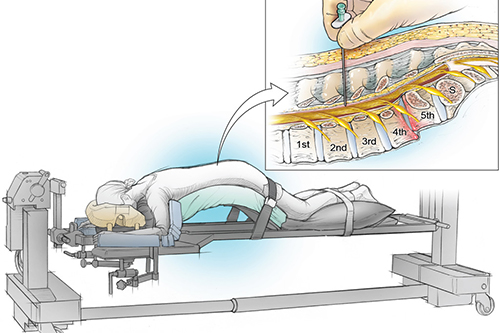Meet Our Doctor
Dr. Paresh Bang

Awake Spine Surgery In Nagpur

Awake spine surgery, also known as awake spinal fusion or awake spinal surgery, is a surgical approach in which a patient is conscious and alert during the procedure. This technique is primarily used for certain spinal surgeries and allows the surgical team to monitor the patient’s neurological function in real-time, ensuring the preservation of nerve function and reducing the risk of neurological complications.
Awake spine surgery is not appropriate for all patients or all types of spinal procedures. The decision to use this approach is made based on careful consideration of the patient’s health, the complexity of the surgery, and the surgeon’s expertise. The goal is to achieve the necessary surgical outcomes while minimizing risks and enhancing patient safety.
Awake Spine Surgery Procedure
Patient Preparation: The patient is positioned on the operating table, and vital signs are monitored.Local anesthesia is administered to numb the area where the surgery will take place.
Sedation: Sedative medications are administered to induce a state of relaxation and comfort. These medications may help the patient feel drowsy or sleepy but not fully unconscious.
Real-time Feedback: Throughout the surgery, the patient remains conscious and is able to provide real-time feedback to the surgical team. This can include reporting any sensations, pain, or discomfort.
Procedure Execution: The surgeon performs the spinal surgery, which may include procedures such as spinal fusion, discectomy, laminectomy, or other spinal interventions. Specialized monitoring tools may be used to assess nerve function and ensure the safety of the procedure.
Postoperative Recovery: After the surgery is completed, the patient is gradually brought out of sedation. The patient is closely monitored in the recovery area to ensure a smooth transition from sedation to wakefulness.
Advantages of Awake Spine Surgery
- Reduced Anesthesia Risks: Awake spine surgery minimizes the risks associated with general anesthesia, making it a potentially safer option for some patients.
- Real-time Feedback: The ability for the patient to provide feedback during the surgery can help the surgical team make adjustments and enhance the precision of the procedure.
- Quicker Recovery: Since the patient is not fully under general anesthesia, the recovery time may be shorter compared to traditional surgeries.
